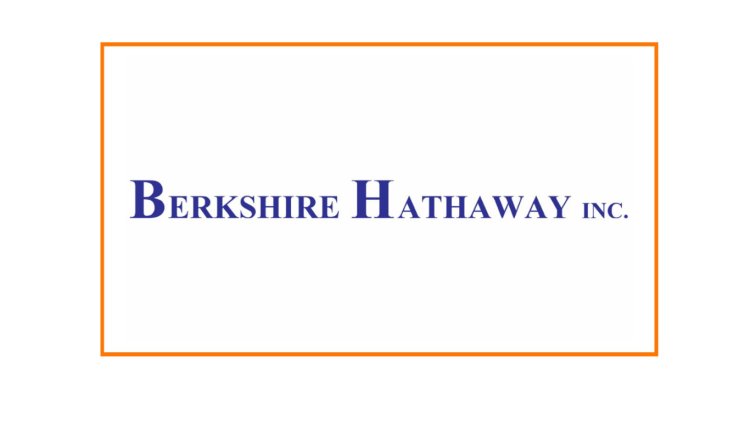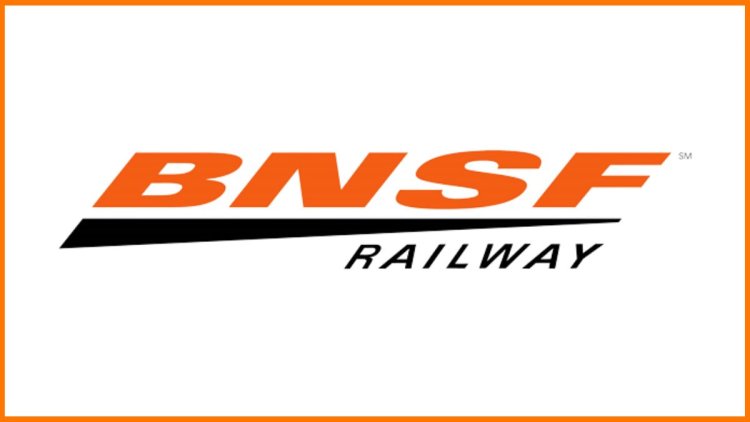Unveiling Warren Buffett's Winning Formula: The Success Story of Berkshire Hathaway
Berkshire Hathaway (BRK.A, BRK.B) is renowned as one of the most sought-after stocks and one of the largest corporations globally. This conglomerate gained its prominent status primarily due to the investment acumen of Warren Buffett, who acquired the company in the mid-1960s. Under the guidance of this billionaire investor, Berkshire Hathaway evolved into a formidable holding company by acquiring struggling businesses and revitalizing them. With notable brand names like GEICO, Duracell, and Fruit of the Loom in its portfolio, this Omaha, Nebraska-based company currently boasts a market capitalization nearing $700 billion, with Class A stock trading above $460,000 per share. This piece explores how Buffett shaped Berkshire Hathaway into the resounding success it is today.
Warren Buffett acquired Berkshire Hathaway in 1965 and transformed it into the world's largest holding company over time.
Buffett's strategy involves identifying distressed companies, purchasing them, and executing turnaround strategies.
Premiums received by Berkshire Hathaway's insurance companies are invested at the discretion of its managers.
Berkshire Hathaway focuses on investing in companies with a long-standing history of dividend payments.
Buffett's approach entails reinvesting these dividends rather than distributing them to Berkshire Hathaway investors.
Berkshire Hathaway: A Comprehensive Overview
The origins of Berkshire Hathaway can be traced back to the 19th century when two independent Massachusetts cotton mills, Berkshire Fine Spinning Associates and Hathaway Manufacturing, operated separately. However, in 1955, these two entities joined forces and merged to form Berkshire Hathaway.
In 1965, Warren Buffett, along with his investment firm, stepped in and acquired a sufficient number of shares to gain complete control of the struggling company. Under Buffett's astute leadership, Berkshire Hathaway rapidly ascended to become one of the world's largest holding companies.
Buffett's transformative vision for Berkshire Hathaway included transitioning it into a conglomerate. To kick-start this process, he initiated the acquisition of National Indemnity, the first among many insurance companies that would come under Berkshire Hathaway's umbrella. Simultaneously, he divested the company from its textile industry ties, effectively liquidating those assets.
Over time, Berkshire Hathaway expanded its portfolio to encompass diverse industries such as insurance, finance, clothing, entertainment, food and beverage, utilities, furniture, household products, media, materials, and construction. Notably, the company boasts several prominent subsidiaries under its banner, including but not limited to:
GEICO
Dairy Queen
Fruit of the Loom
Benjamin Moore
Duracell
Pilot Travel Centers
This comprehensive range of subsidiaries highlights the diverse nature and extensive reach of Berkshire Hathaway's business interests.
Berkshire Hathaway's Wealth Reserves
Berkshire Hathaway thrives on what experts in the industry refer to as its "float." This refers to the money received as premiums by Berkshire Hathaway's insurance subsidiaries, which is yet to be utilized for covering any claims.
This pool of funds, also known as available reserves, does not technically belong to the insurance company itself. Instead, it remains accessible for investment at the discretion of its managers. In 2021, the company's float reached $147 billion, representing a $9 billion increase from the previous year.
The float empowers Berkshire Hathaway to swiftly acquire distressed companies and revive them. A prime example is the successful turnaround of Fruit of the Loom. Berkshire purchased this struggling clothing company for a mere $835 million in 2002 when its stock had plummeted by 97%.
One of the fundamental principles embraced by Buffett's mentor, Benjamin Graham, is the significance of dividends as an investor's secret weapon. Many Fortune 500 companies in which Berkshire Hathaway holds substantial positions, such as Apple (AAPL), Coca-Cola (KO), and American Express (AXP), consistently demonstrate a history of paying and either maintaining or increasing dividends year after year. Coca-Cola, for instance, has raised its annual dividend for 55 consecutive years.
While impulsive speculators chase after soaring stock prices, patient investors focus on companies with solid fundamentals that allow for regular dividend payments to shareholders. Surprisingly, financial news outlets seldom emphasize dividend data to the same extent as stock prices and movements, despite dividends serving as a reliable measure of a company's strength.
Given that management only distributes cash to owners when profits are substantial enough to support such payments, it is unsurprising that Buffett has pursued dividends alongside value investing, resulting in Berkshire Hathaway's consistent success.
Greg Abel, the CEO of Berkshire Hathaway Energy and Vice Chair responsible for non-insurance operations, has been informally designated as Warren Buffett's unofficial successor. This announcement was made by Vice Chair Charlie Munger on May 1, 2021, without suggesting a specific date for the succession.
Paying Dividends? Not the Berkshire Way
Dividends may be appealing to Buffett when considering potential investments, but he remains resolute in not paying them out to Berkshire Hathaway's own investors. While this stance may seem self-evident, it is logical to accept cash offered by other companies while refraining from distributing cash oneself.
Berkshire Hathaway has only paid a dividend once in its history, and that was a mere 10 cents per share in 1967. To this day, Buffett humorously claims that he must have missed the dividend authorization while in the bathroom.
Nevertheless, it would be short-sighted for any Berkshire Hathaway shareholder to complain about the company's refusal to pay dividends. Since Buffett assumed leadership, the Class A share price has experienced a staggering increase, trading at $275 in 1980, $32,500 in 1995, and reaching $424,840 by May 5, 2021, market close. As of May 17, 2022, the share price stood at $471,670.
The Class B shares have also performed remarkably well. Initially priced at $20.66 per share upon their introduction in 1996, they rose to $79 in 2010 and reached $282 by May 5, 2021. As of May 17, 2022, the Class B share price was $314.60.
Berkshire Hathaway's rationale for avoiding dividends is straightforward, making it challenging to argue against. As an investor, would you prefer to receive a dividend payment or have it reinvested by the team that transformed a humble textile investment into one of the largest, most esteemed, and financially robust companies to date?
Given that a single Class A share of Berkshire Hathaway is equivalent to several years' worth of the average American salary, it is understandable that shares trade infrequently, with daily trading ranging from 400 to 3,000 shares. Buffett has never considered a Class A stock split, as it could encourage speculative behavior.
However, in 1996, Buffett authorized the creation of Class B shares (BRK.B), valued at 1/30th the price of their Class A counterparts. After a 50-for-1 split in 2010, the Class B stock replaced BNSF on the S&P 500 index. Its lower price and increased liquidity make Class B shares suitable for an index that aims to gauge overall market value, whereas Class A shares, given their higher cost and lower circulation, would not be as effective as an index component.
Unveiling Berkshire Hathaway's Financial Advantage: The Float
Berkshire Hathaway's Float represents the funds acquired as premiums from its Property/Casualty insurance operations, which do not require immediate disbursement. While these funds will eventually be allocated to others, in the meantime, the company strategically invests them for the mutual benefit of both Berkshire Hathaway and its shareholders.
Exploring Dividends: A Financial Reward for Shareholders
A dividend is a distribution of profits made by a company to its shareholders, typically in the form of cash. These payments, which require approval from the company's board of directors, serve as a financial reward for shareholders. Dividends allow shareholders to earn a return on their equity investment without the need to sell their shares.
Unveiling Berkshire Hathaway Stock: Exploring the Price Point
Unbelievable Yet True: The Remarkable Price Journey of Berkshire Hathaway Stock.Prepare to be astounded, as a single share of Berkshire Hathaway Class A stock has recently closed at a staggering $471,670. Surprisingly, back in 1980, the same share was priced at a mere $275.00. The awe-inspiring return on investment for this stock from 1965 to 2021 stands at an astonishing 3,641,613%.
Berkshire Hathaway - Challenges Faced
With massive government stimulus and ultra-low interest rates threatening to drive inflation higher, Berkshire may be too huge to invest extensively in industries that profit from higher consumer prices. Several Berkshire shareholders voiced dissatisfaction with Buffett's failure to buy more stock at the start of the outbreak, a wasted opportunity that gave the S&P 500's roughly 90% gain from last year's low.
Berkshire's capacity to create cash is further hampered by historically low-interest rates, which the Federal Reserve has promised to keep near zero for years. According to Buffett, Berkshire currently makes approximately $20 million per year on its more than $100 billion in Treasury bills, compared to around $1.5 billion before the epidemic.
Berkshire Hathaway - Future Plans
The operational business of the conglomerate is a patchwork of businesses focusing on the traditional backbone of the economy, such as railways, batteries, insurance, home furnishings, and retail. Berkshire Hathaway has lost out on the rapid growth observed in the Amazon of the globe over the years due to its old economy focus. However, the "Oracle of Omaha" is shown his willingness to diversify away from Berkshire's traditional economy core in order to adapt to the new reality.
Berkshire's exposure to technology stocks has increased to 45 percent of its portfolio as a result of its big holding in Apple. Its Apple stake, which it originally purchased in 2016, has grown to nearly $120 billion, making it the company's largest stock position by far. Except for IBM, Berkshire's top equities holdings ten years ago had relatively little tech exposure. One of the most pressing concerns about Berkshire Hathaway's future in recent years has been who would succeed Buffett as CEO. The answer has finally come from the Oracle of Omaha. Greg Abel, who manages the noninsurance companies will be the next CEO of Berkshire Hathway.
Berkshire Hathaway's Holdings: Unveiling its Ownership and Competition
Does Berkshire Hathaway own Apple?
Berkshire Hathaway holds an impressive 908 million Apple shares, valued at $151 billion.
What are the companies owned by Berkshire Hathaway?
Berkshire Hathaway boasts ownership of major companies such as GEICO, Duracell, Dairy Queen, BNSF, Lubrizol, Fruit of the Loom, Helzberg Diamonds, Long & Foster, FlightSafety International, Shaw Industries, Pampered Chef, Forest River, and NetJets.
Who holds the majority of Berkshire Hathaway shares?
The Vanguard Group is the largest shareholder of Berkshire Hathaway.
Who founded Berkshire Hathaway?
Berkshire Hathaway was founded by Oliver Chace in 1839.
In which sectors does Berkshire Hathaway own firms?
Berkshire Hathaway operates as a conglomerate with holdings in the insurance, rail transportation, energy generation, distribution, manufacturing, and retailing industries.
Which companies are competitors of Berkshire Hathaway?
Berkshire Hathaway faces competition from prominent firms such as BlackRock, Allstate, The Carlyle Group, Howard Hanna Real Estate Services, and Allegheny Technologies.
The Final Verdict
While many investors seek value and selectively invest in companies that align with their criteria, Berkshire Hathaway adopts a parallel approach. Rather than acquiring a few shares of a company's stock, it opts to acquire the entire company itself. By consistently applying this investment strategy over several decades, Berkshire Hathaway has evolved into the colossal global conglomerate that exists in the present day.
What's Your Reaction?

























